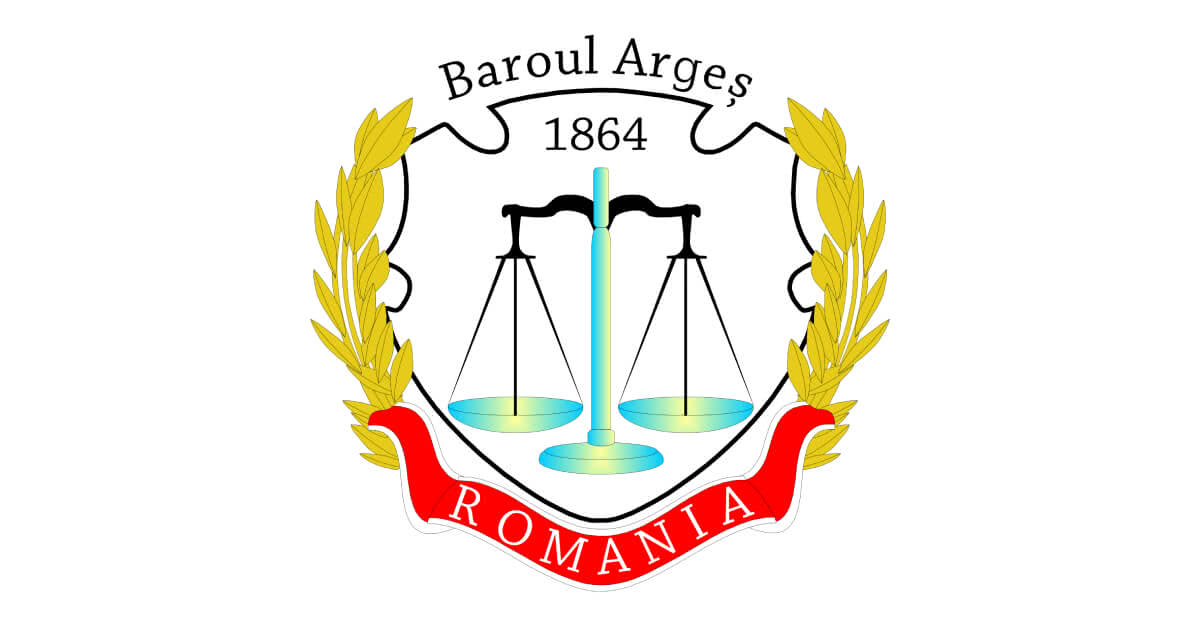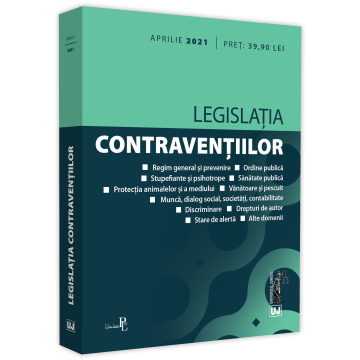Transnational insolvency law in Italian-romanian experience
Universuljuridic.ro PREMIUM
Aici găsiți informaţiile necesare desfăşurării activităţii dvs. profesionale.
Universuljuridic.ro PREMIUM pune la dispoziția profesioniștilor lumii juridice un prețios instrument de pregătire profesională. Oferim un volum vast de conținut: articole, editoriale, opinii, jurisprudență și legislație comentată, acoperind toate domeniile și materiile de drept. Clar, concis, abordăm eficient problematicile actuale, răspunzând scenariilor de activitate din lumea reală, în care practicienii activează.
Testează ACUM beneficiile Universuljuridic.ro PREMIUM prin intermediul abonamentului GRATUIT pentru 7 zile!
🔗Vezi și Dreptul transnațional al insolvenței în experiența italo-română
1. Private international law matters related to the insolvency of multinational enterprises and the importance of its regulation.
The expression „transnational insolvency law” (or, also, „multinational insolvency system”) can be used to define the set of rules and principles – contained in hard and soft law texts and in collections of international best practices – that have as their object the insolvency of debtors characterized by an organizational structure and/or a distribution of assets that transcends the geographical boundaries of a single legal system[1].
This is a body of rules that in recent years, due to the progressive globalization of the market and the increasing internationalization of companies, has seen a significant expansion and significant changes, attracting the attention not only of economic operators, but also of the academic community[2] and national legislators[3], now aware, with a few painful exceptions[4], of the importance that the effective and efficient management of the crisis of multinational companies has for the economic development of a nation[5].
In order to understand the problems generated by the insolvency of multinational companies, it is necessary to start from the cardinal principles, unanimously shared, that govern insolvency procedures; that is, the principles of generality and universality.
According to the principle of generality, the effects of the opening of the collective procedure extend to all the creditors of the debtor who is subject to it. From that moment onwards, the creditors will no longer be able to take executive action on the debtor’s assets (so-called automatic stay); they will also not be able to create new causes of preference on these assets; finally, they will be satisfied according to the rank of the claim they have and only after they have been recognized as such (as creditors, that is) according to the rules of ascertaining liabilities. The opening of the procedure, in other words, determines the constitution of the substantial competition and the formal competition among the creditors of the common debtor. And this, independently of the nationality of the creditor, whether he is a citizen of the State in which the procedure has been opened or, on the contrary, a foreigner.
Now, it is quite evident how the simultaneous application of the principles of universality and generality briefly mentioned, by two or more legal systems, inevitably determines a sort of short-circuit, which cannot be resolved in the absence of an ad hoc discipline. Since the debtor’s assets are, for the sake of argument, unique, the attraction of the same towards more than one centre of gravity, represented by the insolvency proceedings opened in various countries, leads to the result of sterilizing the effects of the principle of universality and breaking the assets into as many parts as there are proceedings opened against the same debtor[6].
This explains the importance that an ad hoc discipline of cross-border insolvency is assuming and will increasingly assume in modern business law.
2. The purposes of transnational insolvency law.
What are the priority objectives that a modern and economically efficient system of governance of cross-border insolvency should pursue is widely known and unanimously shared[7], namely: the predictability and certainty of the rules applicable to those (debtor, creditors, contractual counterparties, etc.) who, directly or indirectly, are involved in the crisis[8]; the maximization of the value of the assets, through liquidation or the reorganization of the business units[9]; the minimization of expenses and the duration of the collective procedure(s)[10]; the avoidance of conflicts between legal systems[11]; the equal treatment of all creditors of the insolvent company, regardless of their nationality[12].
Among those mentioned, the objectives of maximizing the value of the debtor’s assets and the reduction of both costs and time of the procedure, do not require any explanation here, as they are in fact typical objectives of any system of settlement or management of the crisis of enterprises, regardless of their size, cross-border or domestic[13].
The objective of predictability and certainty of the rules applicable is particularly relevant and would seem to be at the basis of the efforts made so far in the international sphere in this delicate matter[14], given the heavy negative repercussions that uncertainty determines with respect to both the credit market[15] and, in a broader perspective, the economic development of nations[16].
It has even been argued that „The International bankruptcy system can be a success only if it is predictable”[17]. And it is precisely from the point of view of predictability and certainty of the legal situations involved in bankruptcy that the „territorialist grafts” in the texts that make up the current international bankruptcy law can be explained, first and foremost the possibility of opening local procedures in States other than the home country.
[1] In the Guide to Enactment and Interpretation of the Model Law on Cross-Border Insolvency, elaborated by Uncitral in 1997, it is stated that the Model Law has as its subject matter «cases where the debtor has assets in more than one State or where some of the creditors of the debtor are not from the State where the insolvency proceeding is taking place» (Uncitral, UNCITRAL Model Law on Cross-Border Insolvency with Guide to Enactment and Interpretation, New York, 2014, 19).
In literature, for a definition of international (or transnational) insolvency see, for all, Flaschen e Plank, The Foreign Representative: A New Approach to Coordinating the Bankruptcy of a Multinational Enterprise, 10 Am. Bankr. Inst. L. Rev., 2002, 111.
[2] Drobnig, Cross-border Insolvency. General Problems, in Forum Internationale, 1993, 12; Garrido, No Two Snowflakes the Same: The Distributional Question in International Bankruptcies, 46 Tex. Int’l L.J., 2011, 459; Howell, International Insolvency Law, in 42 Int’l Law., 2008, 113; LoPucki, Cooperation in International Bankruptcy: A Post-Universalist Approach, in 82 Cornell L. Rev., 1999, 702; Id., Global and Out of Control? 79 Am. Bankr. L.J., 2005, 92; Rasmussen, A New Approach to Transnational Insolvencies, 19 Mich. J. Int’l L., 1997, 18; Id., Where are All the Transnational Bankruptcies? The Puzzling Case for Universalism, 32 Brook. J. Int’l L., 2007, 983; Westbrook, Theory and Pragmatism in Global Insolvencies: Choice of Law and Choice of Forum, 65 Am. Bankr. L.J., 1991, 446; Id., The Lessons of Maxwell Communication, 64 Fordham L. Rev., 1996, 2531; Id., Universal Priorities, in 33 Tex. Int’l L.J., 1998, 36; Id., A Global Solution to Multinational Default, 98 Mich. L. Rev., 2000, 2276; Id., Priority Conflicts as a Barrier to Cooperation in Multinational Insolvencies, 27 Penn. St. Int’l L. Rev., 2009, 869; Mazzoni, Osservazioni in tema di gruppotransnazionaleinsolvente, in RdS, n. 4/2007, 2; Id., Concordati di gruppitransfrontalieri e disciplinacomunitariadelle procedure di insolvenza, RdS, 2010, 553; Id., Cross-border insolvency of multinational groups of companies: proposals for an European approach in the light of the Uncitral approach, Aa.Vv., Insolvency and Cross-border Groups. UNCITRAL Recommendations for a European perspective?, Quaderni di Ricerca Giuridica della Banca d’Italia, n. 69/2011, 15; Sciuto, Crisi dell’impresa e crisi della sovranità statale nel mercato globale, Riv. trim. dir. pubb., 2009, 423.
[3] Just think of the States which, in recent times, have adopted the Model Law on Cross-border Insolvency drawn up by Uncitral. Many other legal systems, even though they have not formally adopted the Model Law, have adopted extremely complete and detailed disciplines on the subject of cross-border insolvency: this is the case, for example, remaining on the old continent, for Spain (cf. articles 199-230 Ley Concursal); Portugal (cf. articles 271-296 Codigo da insolvencia e recuperação de empresas) and Germany (§§ 335-358 Insolvenzordnung).
[4] The reference is, of course, to the Italian legal system (see infra, § 3).
On the problems that determine – both at a microeconomic level (i.e., from the point of view of predictability and certainty of the legal situations of the subjects involved in the crisis) and macroeconomic (considering, that is, the repercussions on the credit market and on the economy of our country) – such disinterest, please refer to VATTERMOLI, Par condicio omnium creditorum, Riv. trim. dir. proc. civ., 2013, I, 155.
[5] In the Guide to Enactment and Interpretationof the Model Law it is stated that: «The increasing incidence of cross-border insolvencies reflects the continuing global expansion of trade and investment. However, national insolvency laws by and large have not kept pace with the trend, and they are often ill-equipped to deal with cases of a cross-border nature. This frequently results in inadequate and inharmonious legal approaches, which hamper the rescue of financially troubled businesses, are not conductive to a fair and efficient administration of cross-border insolvencies, impede the protection of the assets of the insolvent debtor against dissipation and hinder maximization of the value of those assets. Moreover, the absence of predictability in the handling of cross-border insolvency cases can impede capital flow and be a disincentive to cross-border investment» (Uncitral, UNCITRAL Model Law on Cross-Border Insolvency, cit., 20). On this point, see JACK, A Missing Variable: the Impact of Cross-Border Insolvency Laws on Foreign Direct Investment, 27 Minn. J. Int’l L., 2018, 313; GUIHOT, Cross-Border Insolvency: A Case for a Transaction Cost Economics Analysis, 25 Norton Journal of Bankruptcy Law and Practice, 2016, 1.
[6] Carle, La faillite dans le droit International privé, traduction by E. Dubois, Paris, 1875, 31.
[7] LOPUCKI, Cooperation in International Bankruptcy, cit., 702-703.
[8] WESTBROOK, Theory and Pragmatism in Global Insolvencies,cit, 466.
[9] RASMUSSEN, A New Approach to Transnational Insolvencies, cit., 18; WESTBROOK, A Global Solution, cit., 2276.
[10] DROBNIG, Cross-border Insolvency, cit., 12.
[11] WESTBROOK, Comment: A More Optimistic View of Cross-Border Insolvency, 72 Wash. U. L.Q., 1994, 947.
[12]ALWANG, Note, Steering the Most Appropriate Course Between Admirality and Insolvency: Why an International Insolvency Treaty Should Recognize the Primacy of Admirality Law over Maritime Assets, 64 Fordham L. Rev., 2623.
[13] With the clarification, however, that «transaction costs are particularly problematic for International bankruptcies»: ADAMS-FINCKE, Coordinating Cross-Border Bankruptcy, cit., 50. As correctly pointed out by the authors cited above, «multiple insolvency cases in several countries for the same debtor duplicate transaction costs and vastly decrease economic efficiency. Differences in legal systems also add substantial costs because the decision-makers must educate themselves in the laws of every country involved».
[14] In fact, the Preamble of the Model Law states that one of the objectives of the soft law text is to «greater legal certainty of trade and investment».
[15]BUFFORD, Global Venue Controls Are Coming: a Reply to Professor LoPucki, 79 Am. Bankr. L.J., 2005, 120-121: «In calculating expected economic benefits, parties are assumed to take into account the legal systems and rules that will likely govern how their transactions are carried out and the benefits are allocated. In addition, the parties must evaluate the risks undertaken, including how these risks will be handled under the applicable legal system. If it is uncertain what legal system will govern the risks, it is difficult to quantify them. Where the distribution rules of legal systems are different, the ultimate beneficiaries of transactions may differ from those the parties have anticipated ex ante. Thus, the application of varying distribution rules may result in the parties’ entering into sub-optimal transaction and leave them poorer than they would have been otherwise».
[16] CARLE, La faillite dans le droit International privé, cit., 24-25 : «Quel quesoit le lieu du contrat, à quelque Etat que les contractants appartiennent, il faut que la législation à appliquer et la juridiction compétente soient connues d’une manière certaine. Le doute sur ces questions ne peut être dans les affaires civiles, en raison de leur lenteur ordinaire, une source d’aussi graves dommages que dans le commerce, où la célérité est essentielle ».
[17] LOPUCKI, Universalism Unravels, cit., 158.




















